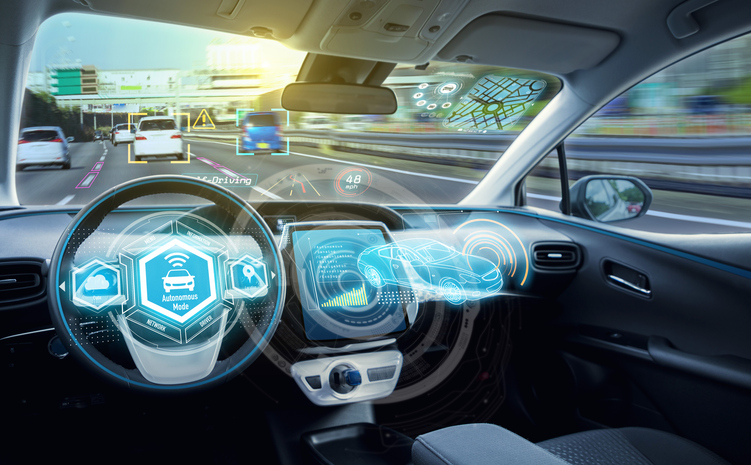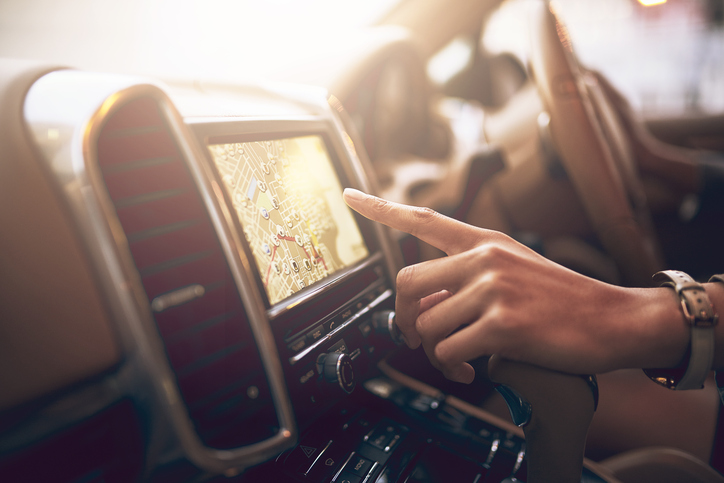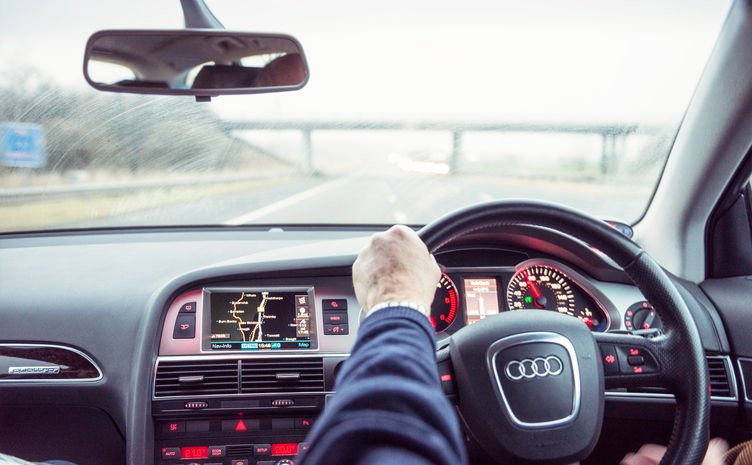From interactive doorbells to apps that control our appliances, everyday life is growing more reliant on the internet – and the car industry has got in on the act, too. Over the past five years, connected cars have come to dominate the market, with more features being added all the time.
But what exactly is a connected car? And how is the tech changing the way we drive? From their benefits to their pitfalls, here we cover everything you need to know about connected cars. Use the links below to navigate or read on for the complete guide.
- What is a Connected Car?
- What Are the Benefits of Owning a Connected Car?
- Can My Connected Car be Hacked?
- What Does the Future Hold for Connected Cars?
What is a Connected Car?
A connected car is any car that’s connected to an outside network, whether that’s via Bluetooth, a smartphone, satnav, or the internet. Connected cars allow us to use cutting-edge software, apps and plugins to enhance the driving experience, with innovations in safety, comfort and in-car entertainment.
Since 2010, cars have been designed with connectivity in mind, and odds are you’re driving a connected car without even realising it. Most modern cars are fitted with an integrated infotainment system and built-in GPS as standard, all easily accessed via a digital display on the dash.
And, more recently, high-end brands like Mercedes and BMW have equipped cars with their own internet connection (usually via a SIM card), allowing you to connect multiple devices to your car’s network. BMW’s in-car hotspot even features a removable unit in the armrest, which can be used to access the internet when you’re away from the car.
And, if you’ve got an older car, don’t worry, because many of these systems can be retrofitted in most standard models.
What Are the Benefits of Owning a Connected Car?
Connectivity offers a range of benefits and features for car and driver, and we’ve covered a handful of these below.
Safety
One of the perks of driving a connected car is the enhanced safety features they offer.
OnStar, introduced in the US by General Motors in 1996, essentially marked the birth of the connected car, providing in-vehicle emergency and breakdown assistance at the touch of a button. And safety has been at the heart of connected cars ever since.
Today, your car can:
- Alert you to hazardous weather conditions
- Help you avoid congestion
- Warn you about potential collisions or objects in the road
- Automatically contact emergency services whenever an airbag is deployed
- Suggest quicker, safer travel routes.
Talk about peace of mind at the wheel.
Infotainment
Not so long ago, tethering your smartphone or iPod to your car’s stereo via Bluetooth felt like cutting-edge technology. Today, new software like Apple CarPlay and Android Auto let you link your phone to the car’s display, so you can access your phone book, music and other apps on your dashboard.
And, with in-car assistants such as Amazon Alexa and Apple’s Siri, you can access apps, maps and data without ever taking your hands off the wheel. Just make sure you set it all up before you start driving, and don’t let it distract your attention away from the road.
Navigation
We’ve come a long way since the launch of commercial satnavs in the early noughties, and today there’s an abundance of in-car navigation systems available for your connected car. And we’re not just talking route planning here; sophisticated GPS provides regular traffic updates, plots alternative routes to avoid congestion, and even helps you to find your car in a crowded car park.
Maintenance
New apps and plugins like TomTom’s Curfer and the AA’s Car Genie allow you to monitor your car’s performance in real time, checking fuel consumption, tyre pressures, oil temperature and battery voltage, as well as alerting you to any potential problems or imminent breakdowns.
You can even review your driving after every trip to check things like acceleration, cornering, and braking. Making adjustments to how you drive can improve your car’s overall performance and fuel efficiency.
Comfort
Systems like “Mercedes me connect” link you to your car like never before, with a focus on comfort and convenience. It offers features like remote parking and concierge services, and apps that allow you to warm up your car on icy mornings without ever leaving the house. All designed to make driving as comfortable as possible.
Security
Gone are the days of unreliable car alarms, going off for no reason and waking up the entire street in the wee small hours. Today’s connected cars boast lots of security features designed to thwart car thieves. You can disable your ignition remotely, slow down the engine to prevent high-speed chases, and track your stolen car using GPS. Of course, all this new technology doesn’t mean your car is completely safe.
Can My Connected Car Be Hacked?
As with any device that’s connected to the internet, cybersecurity is a real concern. While manufacturers have been quick to play down fears, the consequences of criminals hacking your car could be devastating.
In 2015, a journalist for Wired magazine agreed to let hackers infiltrate his Jeep during a controlled experiment, and the results were startling. From a remote location more than 10 miles away, armed with nothing more than an ordinary laptop, they were able to manipulate the air con, affect the brakes and steering, take control of the digital display, and ultimately kill the engine. Scary, right?
While the last few years have seen car manufacturers make significant strides in the fight against cyber criminals, anyone thinking of buying a connected car should be aware of the risks and make sure they keep apps and systems updated so that they always have the right level of security in place.
What Does the Future Hold for Connected Cars?
The demand for connected cars is getting bigger, with manufacturers devising ever more complex and innovative features to lure in buyers. In the next few years, we can expect to see big leaps in vehicle-to-vehicle communication, as well as greater interaction between cars and roads, with some states in the US already trialling schemes that allow a central computer to tell cars about traffic jams, delays and hazardous road conditions.
Jaguar and Land Rover have already begun using NASA technology to monitor drivers’ concentration levels through sensors in the steering wheel, and in the not too distant future we might be able to receive in-car deliveries from services like Amazon, with a new initiative that will let us programme our cars to unlock at a specific time of day so that delivery drivers can leave packages in them.
While some of this might sound like it’s been lifted straight out of a science fiction novel, it seems that connected cars hold the key to the future of motoring.
Connected or classic, Prestone’s products have been specially developed to excel in extremes, for the best driving experience. For more information, visit the Prestone homepage today.



